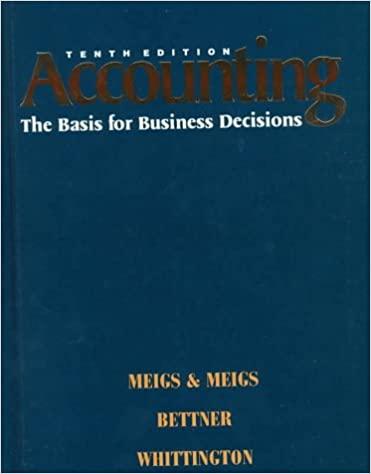

EXERCISE 4: USING FINANCIAL RATIOS TO CALCULATE CASH FLOW PROJECTIONS After being in business for six years, Graham Mason, owner of a small retail store, is considering buying a new information system that would provide him with better operating and financial information. Graham feels that the new system would give him better control over his inventories so that he would be able to manage his pur- chases more wisely. He is also interested in renovating his store. After going through some detailed calculations, he determines that he would have to invest around $250,000 in early January 2014. Graham is considering borrowing some money from the bank. However, before meeting his banker, he asks his accoun- tant to figure out how much cash he could squeeze from his operations internally) to help him finance his two projects. Graham feels that he can improve his average collection period to 40 days and turn his inventory three times a year by December 31, 2013 (industry averages). With the following partial information, calculate how much cash Graham could raise internally by December 2013. Partial Statement of Financial Position As at December 31, 2013 (in S) Inventories Trade receivables Cash Total 200,000 100,000 20,000 320,000 Trade and other payables Notes payable Future taxes payable 150,000 50,000 50,000 250.000 Total Scanned by CamScanner Learning Exercises 169 Statement of Income For the year ended December 31, 2013 (in $) 500,000 (300.000) 200,000 Revenue Cost of sales Gross profit Other expenses Depreciation/amortization Total expenses Profit before taxes Income tax expense Profit for the year (135,000) (15,000) (150,000) 50,000 (25,000) 25,000 4 Describe how financial ratios can be used to measure and improve a company's financial performance. (200,000) 400,000 Cost of sales Gross profit Expenses Sales salaries Rent Office salaries Advertising Finance costs Total expenses Profit before taxes Income tax expense Profit for the year (150,000) (20,000) (90,000) (23,000) (30,000) (313,000) 87.000 (25,000) $ 62,000 EXERCISE 4: USING FINANCIAL RATIOS TO CALCULATE CASH FLOW PROJECTIONS After being in business for six years, Graham Mason, owner of a small retail store, is considering buying a new information system that would provide him with better operating and financial information. Graham feels that the new system would give him better control over his inventories so that he would be able to manage his pur- chases more wisely. He is also interested in renovating his store. After going through some detailed calculations, he determines that he would have to invest around $250,000 in early January 2014. Graham is considering borrowing some money from the bank. However, before meeting his banker, he asks his accoun- tant to figure out how much cash he could squeeze from his operations (internally) to help him finance his two projects. Graham feels that he can improve his average collection period to 40 days and turn his inventory three times a year by December 31, 2013 (industry averages). With the following partial information, calculate how much cash Graham could raise internally by December 2013. Partial Statement of Financial Position As at December 31, 2013 (in S) Inventories Trade receivables Cash Total 200,000 100,000 20,000 320,000 Trade and other payables Notes payable Future taxes payable 150,000 50,000 50,000 250,000 Total Scanned by CamScanner Learning Exercises 169 Statement of Income For the year ended December 31, 2013 (in S) 500,000 (300,000) 200,000 Revenue Cost of sales Gross profit Other expenses Depreciation/amortization Total expenses Profit before taxes Income tax expense Profit for the year (135,000) (15,000) (150,000) 50,000 (25,000) 25,000 4 Describe how financial ratios can be used to measure and improve a company's financial performance. CYRCISE GUISING FINANCIAL RATIOS TO IMPROVE WORKING








